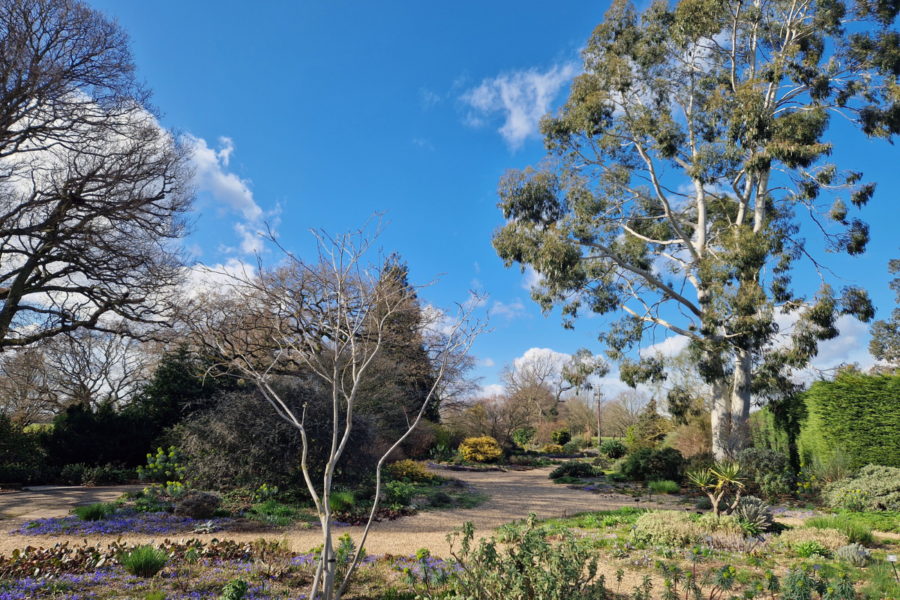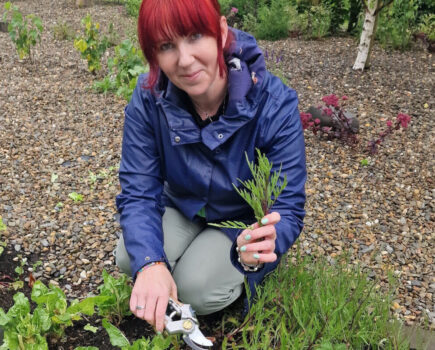Julia introduces the fortnightly garden tasks and projects underway
Now is a great time to be preparing for the long bank holiday weekend at the end of the month; the perfect opportunity to spend quality time in the garden planting, prudently investing in bountiful returns.
The garden and propagation teams are now at full speed preparing for the year ahead, full of the joys of spring –bright eyed and bushy tailed. I’m cherishing this moment as, by May, we will be more wild-eyed and frazzled no doubt!
Wildlife expert, Dr Chris Gibson, has been helping with our website plant descriptions. Beth was wonderful at describing plants and I never fail to be delighted when a plants-person says they use our website as a reference. So, we thought as well as having Beth’s lovely words, we could add information about the wider benefit that each plant brings to the world around us and other creatures that inhabit it. It’s a mammoth task but Chris has been diligently tapping away and you will see that this wildlife information is making its way onto the site. We hope this will help you make even more informed decisions about the plants you choose to add to your garden.
Of course, we’d love you to buy your plants from us and have included a special offer for AG readers in this issue. But most of all feel free to use our website as an information tool and look to see if you can buy your plants locally to you. It will make a huge difference to British nurseries who propagate their own plants if you buy directly from them rather than the giant supermarkets and garden centres.
Anyway, lecture over!
Julia x
Winter jobs in the garden

- As the spring equinox on March 19 draws delightfully near, we are looking forward to the transformation that comes with the official onset of spring. The stage is already being set with fritillaries and erythroniums, also known as dog’s tooth violet, adding a splash of colour to the Water and Woodland Gardens. The large, fuzzy flower buds of magnoliaare starting to swell, hinting at the spectacle that is to come.
- Before the onset of new growth, we have started the process of pollarding; an important gardening technique involving the removal of the previous season’s growth down to a framework on shrubs like cornus, salix, and cotinus. This is done to promote fresh, vibrant stems on cornus, maintain the shape and encourage a good display of catkins on salix, and stimulate large, dramatic foliage on cotinus.
- We have also been spending time pruning lacecap and mophead hydrangeas, helping to encourage healthy, robust growth and enhance flowering. We usually let the faded flowers from the previous year stay on the plants until now as these old blooms serve as a protective layer against frost for the delicate buds beneath them. The process starts with cutting off old flowers back to a robust, healthy bud and then thinning out any worn-out or damaged stems.
- In both the Scree and Gravel Gardens, the gravel mulch on paths and surrounding plants occasionally needs replenishment. This is particularly true after our winter cutback, weeding and tidying, or when we relocate plants. Much like when we add an organic mulch to borders, this fresh layer of gravel tidies up the beds and offers a uniform backdrop, allowing the plants to be the stars of the show. It’s like giving the garden a fresh start as we move into the new season.
Find more tips, advice and articles like this at the Amateur Gardening website. Subscribe to Amateur Gardening magazine now.





